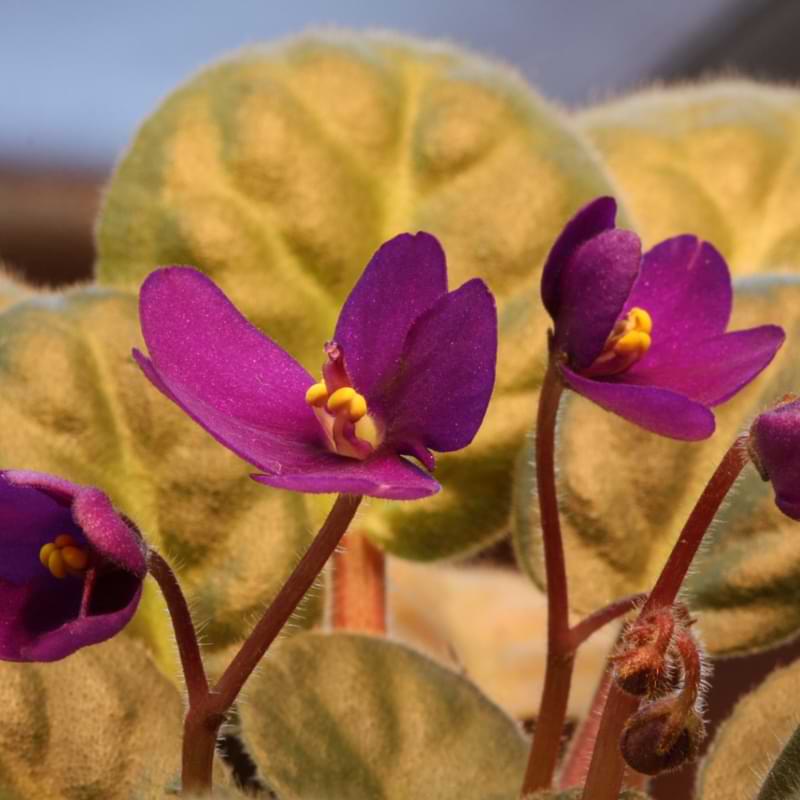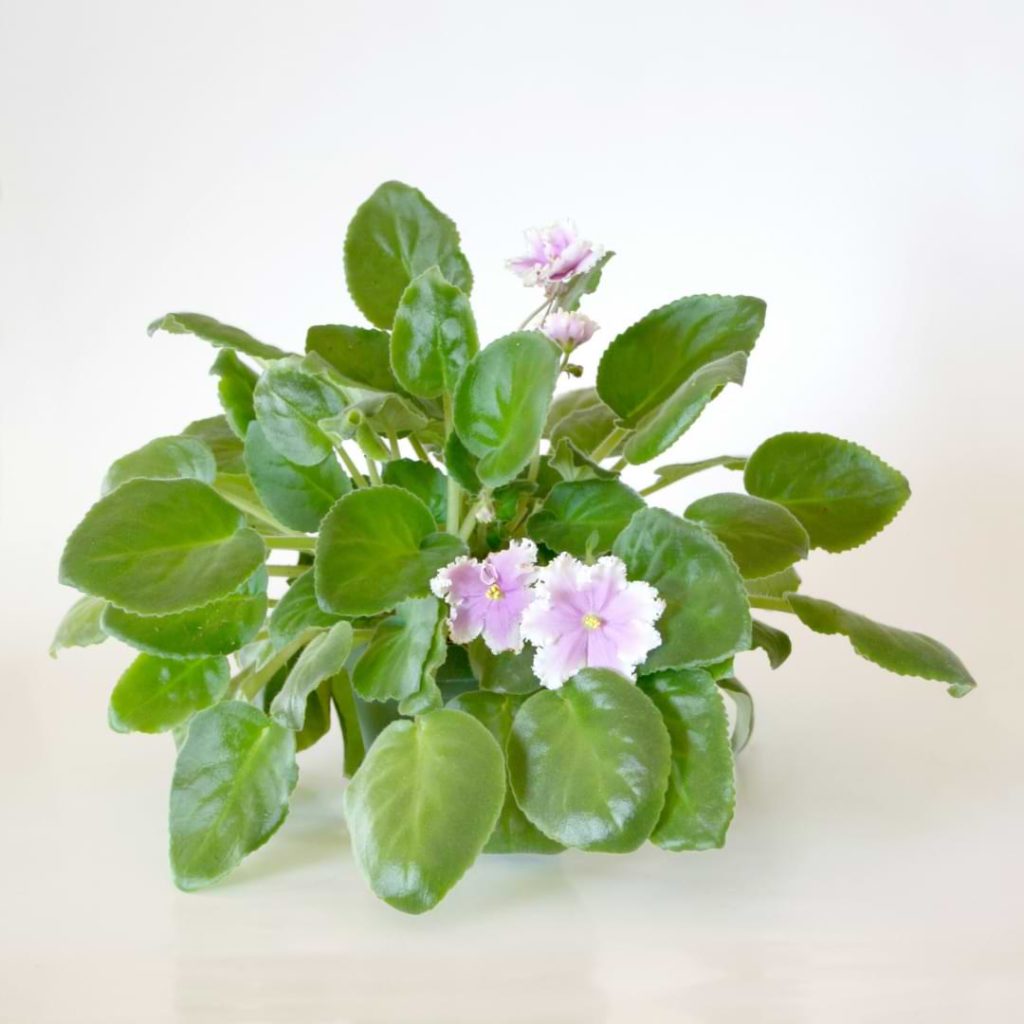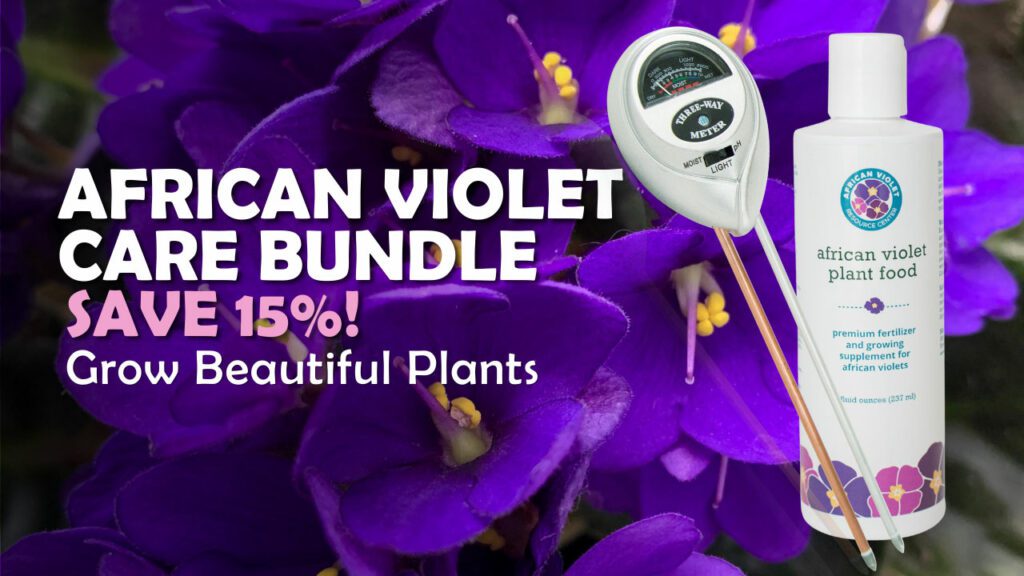What Causes African Violet Leaves to Turn Yellow?
Yellow leaves on an African violet may be annoying, but there are some times when this yellowing is natural rather than a signal that something is wrong. The lower leaves on African violets turn yellow as they get older. African violet leaves don’t live forever. After about a year, these older leaves begin to fade. They eventually turn yellow before dying and dropping off the plant. This is perfectly normal.
However, if newer leaves begin to turn yellow, your African violet is telling you there is something wrong. There may be a problem with watering, sunlight, nutrients, or soil. These are problems you want to correct as soon as possible to keep your African violet healthy.
Water on Leaves
African violets’ fuzzy leaves are one of my favorite things about the plant. However, these leaves are a little bit picky. African violets sometimes get yellow spots on their leaves when water gets on them.
This discoloration does not harm the African violets, but you’ll still want to avoid getting water on the leaves. Allowing moisture to remain on the top of the plant can lead to crown rot. You’ll keep your plant looking better and make it less susceptible to damage if you keep water away from the leaves.
How to Avoid Getting Water on Leaves When Watering
So, how do you keep water off of African violet leaves when watering? African violet containers tend to be small, and this can make it difficult to avoid getting water on the leaves.
One solution is to use a watering can with a long, skinny spout, so you can direct the water exactly where you want it and keep the water off the leaves.
My preferred solution is to water African violets from the bottom. To bottom water, fill up a tray or other container an inch deep or so with water. Then place your African violet in the water for 20 minutes to allow the plant to absorb water. After 20 minutes, remove the plant from the water. You’ll still need to water from the top every few months to help flush out any built-up salt in the soil. I like this method more because it’s easier for me to ensure I’m giving my African violets enough water.
Use Room-Temperature Water for African Violets
In addition to keeping water off the leaves, you should also avoid using water that is very hot or very cold on your African violets. The drastic change in temperature can harm the leaf cells, causing yellow spots to develop.
Water from the tap should work fine, but if it’s significantly warmer or colder than room temperature, give the water a little time to come to room temperature before using it to water your African violet.

Position
Figuring out exactly where to place your African violet can be tricky. If African violets don’t get enough sunlight, their leaves can turn yellow. At the same time, if the plants are placed in sunlight that is too harsh, their leaves can burn.
Finding the correct location for your African violet also has an effect on whether or not the African violet blooms. While African violets need at least 4 hours of sunlight to keep their leaves from turning yellow, they need at least 8 hours of sunlight in order to bloom.
Avoid Direct Sunlight
Clearly, African violets need a lot of sunlight in order to thrive, but you should avoid placing them in direct sunlight. African violets do need exposure to a lot of light, but direct sunlight can cause their leaves to scorch and turn brown.
African violets can handle direct sunlight in the morning or in the afternoon, but direct sunlight during the middle of the day is too strong for these plants.
Ideal Location for Indoor African Violets
To ensure your African violet gets the amount of sunlight it needs, place it in a window that faces west or south. Protect your African violet from direct sunlight during the middle of the day by using blinds or a sheer curtain.
You may need to change the location of your African violet as the seasons change. A window that receives enough sunlight in the summer may not receive enough sunlight in the winter. If it isn’t possible to provide your African violet with enough hours of sunlight during the winter, you might need to use artificial lights to keep it happy and healthy.
Of course, you might discover that your African violet has even more access to sunlight during the winter if trees that normally shade your windows lose their leaves. It’s worth spending the time trying out different locations for your African violet in your home to find the perfect spot.
Fertilizer
What Nutrient Deficiency Causes Yellow Leaves?
If you notice your African violet beginning to turn yellow around the edges of the leaves or between the veins on the leaves, a nutrient deficiency could be the problem. The most common cause of this issue is a lack of magnesium; however, it’s also possible that a lack of iron or zinc is the problem.
Either way, you’ll want to be sure that you are fertilizing your African violet to correct the imbalance.
To correct a nutrient imbalance, first begin by repotting the African violet in new soil. Sometimes a nutrient imbalance occurs because substances built up in the previous soil that prevented the plant from accessing all the nutrients it needed. Thoroughly water the plant after repotting to help wash out any substance that might still be on the roots.
Wait a week to allow the African violet to adjust, and then begin fertilizing your African violet to make sure it gets the nutrients it needs.
Types of Fertilizer
When selecting a fertilizer for your African violets, choose one with a balanced NPK level. This means that the ratios of nitrogen, phosphorus, and potassium are the same. Most fertilizers do not list the micronutrients their formulas contain, such as magnesium, iron, and zinc. Selecting a fertilizer designed for African violets can help ensure your African violet gets all the nutrients it needs.
You can use either a powder or a liquid fertilizer. I find liquid easier to work with, but powders are usually less expensive. Either way, read the fertilizer instructions before using it. I’d suggest using less fertilizer than the packaging calls for.
If you don’t use enough fertilizer at first, you can easily add more later. But over-fertilizing can damage your African violets, and there’s not a good way to correct giving your plants too much fertilizer.
Organic Fertilizer
Using organic fertilizer is not a common choice for African violet growers, but it is possible. Organic elements like manure, fish, and seaweed provide nutrients for the soil. These options are a little bit messy and smelly, however, they are an option for getting your plants the nutrients that they need.
You can make your own organic fertilizer or you can purchase a natural product. I tend to use organic fertilizer (compost) for my outdoor plants rather than my indoor ones, but some houseplant owners successfully fertilize their African violets with organic fertilizer.
Soil Conditions
Improper soil can also cause the leaves on an African violet to turn yellow. African violets cannot grow in regular indoor potting soil as the mix is too heavy and doesn’t provide the environment the plant needs.
Another issue with soil is that leaving African violets in the same soil for years without repotting can be problematic. Over time the soil degrades, making it difficult for African violets to get the water or nutrients they need.
Ensure you have the correct type of soil and remember to repot on a regular basis to keep your African violets healthy.
Soil Mix for African Violets
The most important thing to know about soil when it comes to African violets is that you need to use a soil mix designed for African violets. Regular potting mix for indoor plants is too heavy and holds too much water, which keeps African violet roots from accessing the necessary air and nutrients.
A good soil mix for African violets is light and allows water to drain quickly. It is also slightly acidic with a pH level of between 5.8 and 6.2, which allows African violets to use the nutrients in the soil.
You can either buy a good-quality commercial potting mix for African violets or you can follow a guide to make your own.
See: The Perfect African Potting Soil Mix
Repotting an African Violet
African violets are usually grown in small containers, which means they only have access to a small amount of soil. That’s why it’s important to repot your African violet about every 6 months. At the very least, you should plant to repot your African violet when you notice that it’s becoming root-bound.
Here’s how to repot an African violet:
- Gently remove the African violet from its pot. I find that when I place the pot on its side, the African violet slides out easily. However, you may need to slide a knife around the edges of the pot if the plant is stuck.
- Loosen the potting soil that’s attached to the roots. If you plan to use the same container again, now is the time to clean it out well.
- Cut off any roots that look rotted. If a root feels mushy rather than firm, it needs to go.
- If your African violet has not outgrown its current pot, you can use that pot or one of the same size again. If it’s time for a larger pot, choose one just a little larger than the current one. Place new soil halfway to the top of the pot.
- Place the African violet in the pot. Place more soil around the plant until you reach the area right below where the leaf stems begin. Do not press down on the soil—you don’t want to suffocate the roots!
- Water your African violet until water drains freely from the bottom of the container.
Repotting is easy to do, and it makes a huge difference to the health of your plants in the long run.
What to Do When African Violet Leaves Turn Yellow
As you’ve already read above, African violet leaves turning yellow is not always a cause for alarm. Take a look at the plant to determine whether or not the leaves turning yellow is natural or if it’s an indication that something is wrong with the plant.
Determine whether the issue is with the water, fertilizer, sunlight, or soil; then take the steps needed to fix the problem.
Should I Remove Yellow Leaves?
You should remove yellow leaves from your African violet. Older leaves near the bottom naturally turn yellow as they age. However, if you notice that newer leaves begin turning yellow, you’ll want to figure out what’s causing the leaves to turn yellow. Either way, though, there is no benefit to leaving yellow leaves on your African violet.
Will Leaves Turn Green Again?
Once African violet leaves turn yellow, they will not turn green again. If proper care is provided, new green leaves will grow on your African violet, but the ones that are already yellow will not become healthy again. When the leaves are turning yellow due to natural aging, new healthy leaves will grow. Yellowing leaves that are due to a problem in the plant’s environment; correcting the problem will encourage new healthy growth.
Join the African Violet Club!
Whether you’re just starting out or are a seasoned grower, African Violet Resource Center has everything you need to help your plant grow vibrant and strong. Explore our other articles, visit our online shop, and connect with other houseplant lovers in our Facebook group to learn everything you need to know about this rewarding hobby!
More Great African Violet Resources
African Violet Potting Soil pH Guide
Where to Buy African Violet Plants & Products







